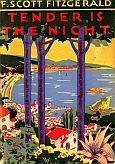Let’s assume for a moment that we are in the market for a first edition copy of Tender is the Night by F. Scott Fitzgerald from 1934. We may be an American literature collector of modern first editions or a fan of Fitzgerald or even a beautiful art dust jacket collector. We want to purchase a first edition, first printing, first issue with an original dust jacket copy of Tender is the Night at a reasonable price. Is $20,000 a reasonable price? That is what we probably will have to pay for such a book. Fitzgerald is without a doubt one of the most collectible authors, and he is also the author of the most sought after modern first edition, The Great Gatsby. Would you buy it now? Wait, he also had just five novels written and their jackets are artistically very attractive. How much would you pay now? I know I sound like an infomercial salesman, but that is exactly how some of these highly collectible books have their ask prices determined. Now consider that there are usually around 20 copies of such a book available for sale at any given time. Hmm maybe I can wait for a good opportunity to purchase my copy.
Unfortunately for almost all of us, that opportunity may never come our way since the senior members of our family are not currently Fitzgerald collectors or collectors at all. The chance that some dealers get anxious to move inventory and lower their prices significantly is also slim. A copy not getting much attention at an auction is another possibility, but a reserve or a high starting bid can block us from that also.
On the contrary, books in this league seem to be following the concept of Veblen goods or a commodity for which people’s preference for buying them increases as their price increases, instead of decreasing according to the law of demand. The theory was first published by Thorstein Veblen, the Norwegian-American economist and sociologist, who wrote The Theory of the Leisure Class: An Economic Study of Institutions. New York: The Macmillan Company, 1899. This masterful work of criticism of Gilded Age American Capitalism was the first of Veblen’s nine books. It made its author famous overnight and added a number of phrases to the language – most notably “conspicuous consumption” and “conspicuous waste.” Veblen defines “conspicuous leisure” as the extended length of time that a person devotes to pleasurable pursuits that grant him or her higher social status.
According to Veblen, the first edition copies of Tender is the Night we are looking to purchase can probably receive more attention and demand if they were priced above $100,000. Given that there are multiple dealers involved and that price fixing is illegal in most of the world economies, the validity of the concept as it applies to today’s rare book marketplace for copies of Tender is the Night may be difficult to prove. One may not help wonder, though, how a dealer sometimes comes up with that astronomically high price and more importantly whether it stands a chance to sell at that level of pricing.
The only proven factor that has an effect on desirability and high pricing is availability. What do we interpret as the winning combination? Scarcity, timing, importance and appearance. Scarcity boosts pricing but higher pricing does not necessarily lead to scarcity. Unless, according to Veblen, the rare book is perceived as a symbol of upper-class status that leads to conspicuous consumption. In this age of financial distress, slow recoveries and leveraged buyouts, it is hard to imagine the existence of a leisure class that uses “conspicuous waste” i.e. by purchasing overpriced rare books, as a means of enhancing individual prestige.

{ 0 comments… add one now }